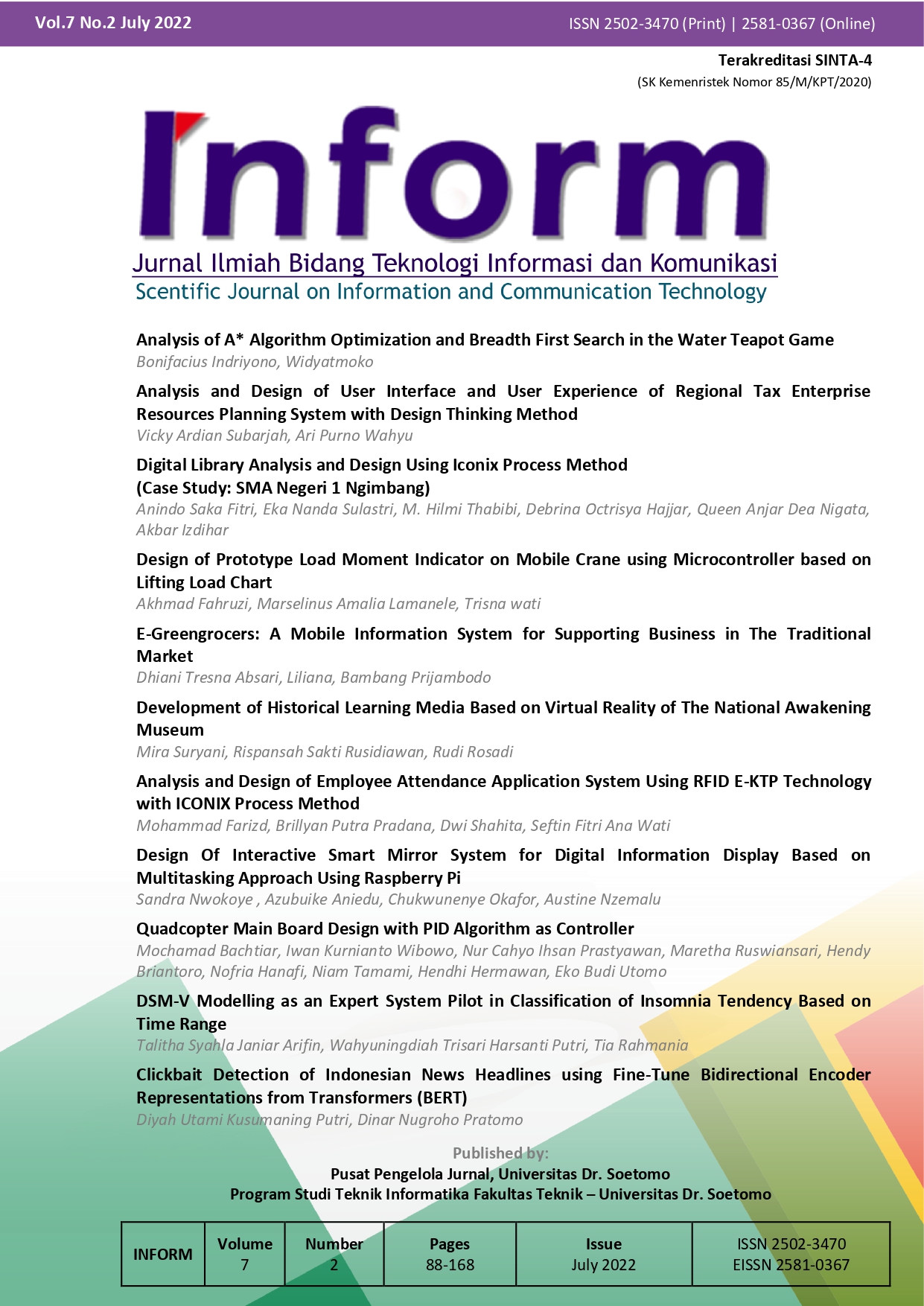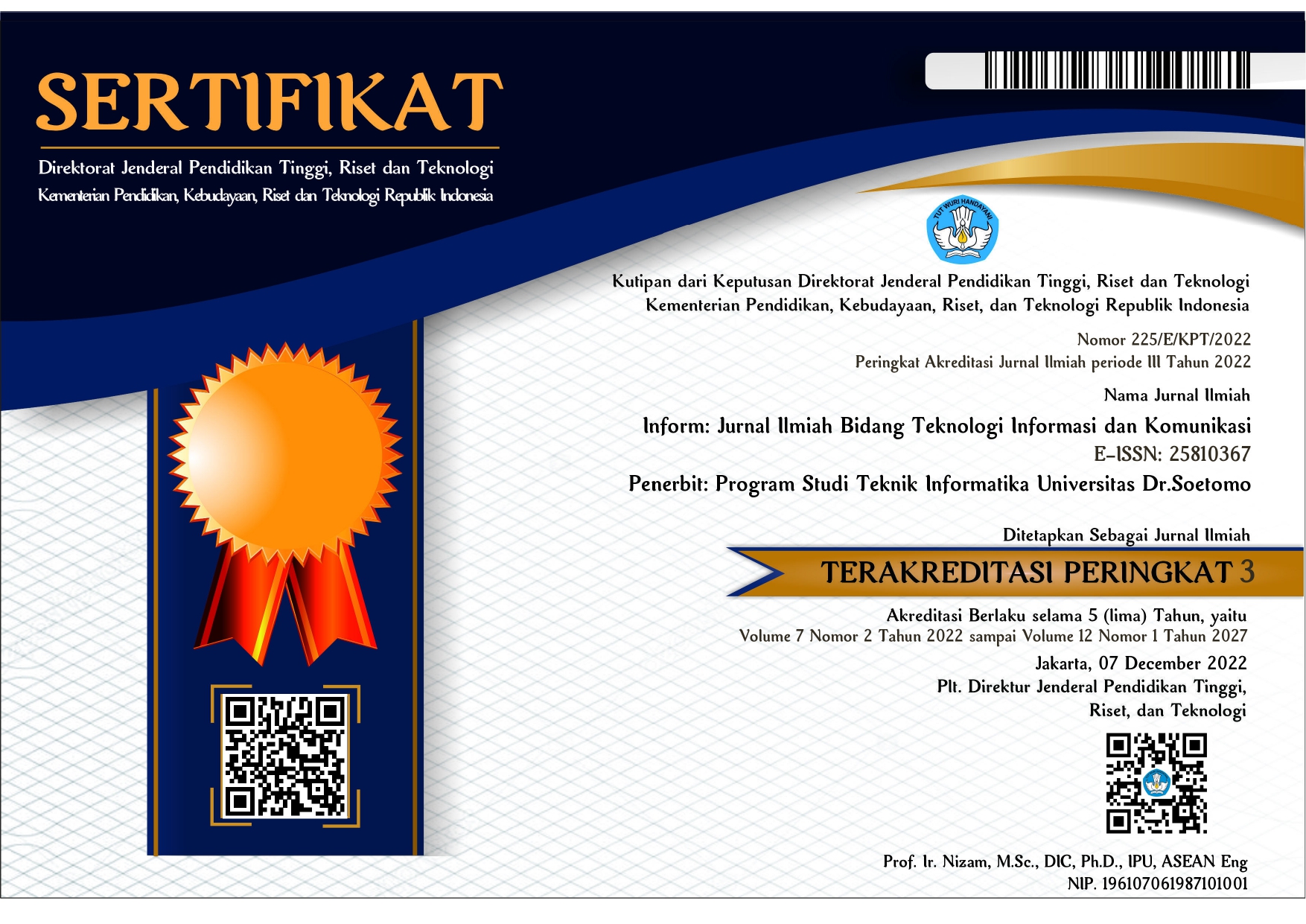Quadcopter Main Board Design with PID Algorithm as Controller
 Abstract views: 430
,
Abstract views: 430
,
 PDF downloads: 416
PDF downloads: 416
Abstract
Kontes Robot Terbang Indonesia (KRTI) Flight controller division has a mission to independently make an unmanned aerial vehicle (UAV) controller. UAV controllers are usually made by non-local manufacturers, who have a package between the controller and the aircraft. Due to limited pins and specific functions, most controllers cannot adapt to user requirements. For this reason, in this study, we made a UAV controller with a more significant number of pins that can be programmed independently. Main Controller is a master board device used to control the stability of the UAV when flying. The main controller has been designed specifically for certain products so that the UAV cannot be modified. In this study, it is proposed to make the main controller that is specifically designed to fly a Quadcopter UAV. Movement control for quadcopter stability when flying using the Proportional Integral Derivative (PID) method. The main controller has a function that is to regulate the entire course of flight on unmanned vehicles. PID control can adapt to changes so that the system becomes stable. The PID control on the Main Controller is intended to balance the quadcopter concerning its orientation angle. The Main Controller is also tasked with recording data from sensors such as the Inertial Measurement Unit (IMU) and reading data from the remote. The controller successfully flew the quadcopter with a P value of 0.245, an I value of 0.0139, and a D value of 0.0085.
References
Wajiansyah, Agusma "Implementation of master-slave method on multiprocessor-based embedded system: case study on mobile robot", Department of Information Technology, State Polytechnic of Samarinda, East Kalimantan, Indonesia, 2018
Sumantri, Bambang "Development of a Low-Cost Embedded Flight Controller for Quadcopter", 2020 International Electronics Symposium (IES), 2020
S. Sakulthong, S. Tantrairatn and W. Saengphet, "Frequency Response System Identification and Flight Controller Tuning for Quadcopter UAV," 2018 Third International Conference on Engineering Science and Innovative Technology (ESIT), 2018, pp. 1-6, doi: 10.1109/ESIT.2018.8665114.
Sandre, Hernandez “Sensorless Field Oriented Control of BLDC motor based on Sliding Mode Observer,” 2019 International Conference on Mechatronics, Electronics and Automotive Engineering (ICMEAE), 2019
Ramachandran R, “Closed-loop Control of BLDC Motor in Electric Vehicle Applications", Department of Instrumentation and Control Engineering, Kalasalingam Academy of Research and Education Krishnankoil, India, 2019
M. M. Bachtiar, F. Ardilla, M. F. Hasbi, and I. K. Wibowo, “PID Control System on Brushless DC Motor for Quadcopter Balance,” Inf. J. Ilm. Bid. Teknol. Inf. dan Komun., vol. 6, no. 2, pp. 110–114, 2021
Kyaw Myat Thu, & Igorevich, G. A. "Modeling and design optimization for quadcopter control system using L1 adaptive control", 2016 IEEE 7th Annual Information Technology, Electronics and Mobile Communication Conference (IEMCON), 2016
Copyright (c) 2022 Mochamad Bachtiar

This work is licensed under a Creative Commons Attribution-ShareAlike 4.0 International License.
Authors who publish with Inform: Jurnal Ilmiah Bidang Teknologi Informasi dan Komunikasi agree to the following terms:
-
Authors retain copyright and grant the journal right of first publication with the work simultaneously licensed under a Creative Commons Attribution License (CC BY-SA 4.0) that allows others to share the work with an acknowledgment of the work's authorship and initial publication in this journal.
-
Authors are able to enter into separate, additional contractual arrangements for the non-exclusive distribution of the journal's published version of the work (e.g., post it to an institutional repository or publish it in a book), with an acknowledgment of its initial publication in this journal.
-
Authors are permitted and encouraged to post their work online (e.g., in institutional repositories or on their website) prior to and during the submission process, as it can lead to productive exchanges, as well as earlier and greater citation of published work.













